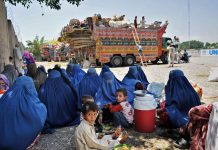High in optics and but low in content, Nepal Prime Minister KP Sharma Oli’s visit to China this week sends signals of balancing India. For the past decade, China has been upping the ante in Kathmandu with close political tie-ups between the communist parties, promises for infrastructure projects, trade, tourism and others.
Nepal’s Prime Minister Sharma Oli is on an official visit to China from December 2-5 at the head of a 78-member delegation. He visited China twice before as the PM but this is the first time he skipped the traditional destination of New Delhi. He met with his counterpart Premier Li Qiang and President Xi Jinping and legislative head Zhao Leji.
On December 3, Nepal and China issued a nine-point agreement on Tokha Chhare tunnel project to connect with the Tibet border, enhancement of trade, completion of nine-storey Basantpur Durbar (damaged during 2015 earthquake), export of buffalo meat, cash assistance of $41 million, despatch of Chinese language teachers, economic and technical cooperation and media exchanges.
At the centre of these is the uncertainty about the Belt and Road Initiative projects. Nepal signed into China’s BRI in May 2017 with 35 projects. However, due to the “harmonious clause” insisted by China on policy coordination — euphemism for tight Chinese controls — political consensus eludes Nepal in implementing any of the above BRI projects.
Learning lessons on the economic meltdown in Sri Lanka in May 2022, and the example of the Pokhara airport that was built with a Chinese loan of $216 million but fallen into disuse for international flights, Nepal’s political consensus is not to seek loans but grants from China. Yet, the pressure from China is high. Beijing wants to build a railway connecting Tibet with Kathmandu but with an exorbitant cost that is higher than the GDP of Nepal.
Other projects which are not part of the BRI scheme also have become controversial. For instance, the Budhi Gandhak dam project was signed by former PM Dahal in 2017 with a Chinese company Gezhouba. But this project was cancelled by the next PM Deuba in 2017. This project was renewed by PM Oli in September 2018 but again scrapped in April 2022 when the licence for Gezhouba Co was revoked.
Similarly, in February 2012, Nepal signed a contract with China’s Three Gorges International Corp for building the 750-megawatt West Seti dam with an investment of $1.6 billion by 2019 but was scrapped by Nepal in September 2018. In the process of executing the dam projects, the costs escalated from $2.5 billion increased to $3 billion for the Budhi Gandhak, besides such projects mired in environmental protests or even corruption charges.
Another significant project is related to the telecommunications sector that provides sweeping control for China in Nepal. The government owned monopoly Nepal Telecom awarded the contracts to two Chinese telecom companies for installing mobile data services and Next Generation Network (NGN) to ZTE Corporation for the Kathmandu Valley and Huawei for the rest of Nepal. Another Chinese company, Asian Info, is providing maintenance services. Eventually, China intends to integrate Nepal into its “digital silk road” initiative of Trans-Himalayan Multi-Dimensional Connectivity Network.
One significant agreement this week is about the despatch of Chinese-language teachers. Nepal has already commissioned a Confucius Institute on February 5, 2007 at Kathmandu University in collaboration with Hebei University of Economics and Business. Since then, many Chinese tutors have visited Nepal. Worldwide, more than 500 such institutes or classrooms were established by China, although some American and European universities have shut down these based on intelligence or other charges. The current agreement provides for the flow of more Chinese tutors into Nepal.
Bilateral relations are riddled with problems. While Chinese tourist inflow increased, Nepal found to its chagrin that e-payments on Chinese social networking sites and financial fraud cases have been pinching its economy. China’s Ambassador Chen Song’s criticism of a Nepal journalist on the Pokhara airport project has not gone down well in Kathmandu.
Nepal also suffers from a huge trade deficit with China of less than $2 billion a year, while the latter’s investments in Nepal have not seen any upward trajectory. For long periods the two main border trade routes through Rasuwagadhi-Kerung and Tatopani-Zhangmu are closed either due to the 2015 earthquake, pandemic or landslides. Nepal also has very few remittances from China.
Nepal was roped into Chinese-led initiatives like the BRI, Xizang-Himalayan grouping, Bo Ao Forum for Asia and others. However, Nepal felt that it was left high and dry, while alienating the historical, cultural and religious ties with its neighbours. Nepalese also realise that even though they had agreed to the Chinese condition that Tibet is an “inalienable” portion of China, and as a follow-up had exerted tremendous pressure on the Tibetan refugees, Kathmandu did not receive anything in reciprocal gesture from China.
Nepal also agreed to endorse China’s “anti-secession” law on Taiwan, “three evils” construct and others. On the other hand, to Nepal’s discomfort, China had removed border pillars in Humla district, Dolakha district, Gorkha, and Kimathanka, creating uncertainties in the border areas for the first time after a border agreement was signed in 1961. Thus, even though Nepal wanted to balance India through expansion of ties with China, it hardly received anything substantial in return from Beijing.









































